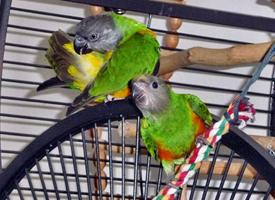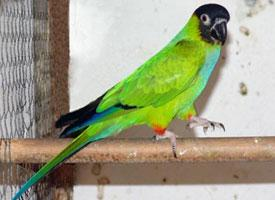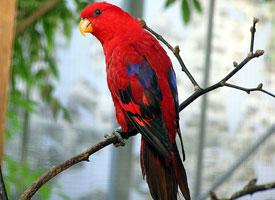
Greutăți și măsuri
| Lungime | de la 25 la 30 cm |
|---|---|
| Lungimea anvergurii aripilor | 17 cm |
Descrierea animalului
The Coconut Lorikeet (Trichoglossus haematodus), also known as the Rainbow Lorikeet in some regions, is a vibrantly colored parrot that belongs to the Psittaculidae family. This species is widespread across various islands and regions in the South Pacific, including parts of Indonesia, Papua New Guinea, New Caledonia, Solomon Islands, and Vanuatu, showcasing its adaptability to different tropical and subtropical environments. The Coconut Lorikeet is renowned for its striking plumage, social behavior, and remarkable adaptability, making it a fascinating subject of study and a popular bird among avian enthusiasts.Physical Description:
The Coconut Lorikeet is a medium-sized parrot, typically measuring between 25 to 30 cm in length and weighing around 75 to 157 grams. One of its most distinguishing features is its brilliantly colored plumage, which exhibits a kaleidoscope of hues. The bird's head is adorned with deep blue feathers, which transition into a bright green on the upper parts of its body. Its chest and abdomen display a vivid red, with bands of yellow and green, creating a stunning contrast against the blue. The wings are primarily green with hints of red and yellow, and the tail feathers are green with a yellowish tip. The bird's beak is bright orange, and its eyes are surrounded by an unfeathered, dark grey area, giving it a striking appearance.
Habitat and Distribution:
Coconut Lorikeets thrive in a variety of habitats, including rainforests, coastal bushlands, mangrove forests, and even urban areas where fruiting trees and flowers are abundant. Their ability to adapt to different environments has allowed them to inhabit a wide range of islands in the South Pacific. Despite their adaptability, habitat destruction and the pet trade pose threats to certain populations.
Diet:
The diet of the Coconut Lorikeet primarily consists of nectar, pollen, and fruit. They possess a specialized brush-tipped tongue that allows them to extract nectar and pollen from flowers efficiently. This adaptation makes them important pollinators for various plant species. In addition to their natural diet, they also consume insects and small invertebrates, providing them with essential proteins.
Behavior and Social Structure:
Coconut Lorikeets are highly social and gregarious birds, often seen in pairs or small flocks. They are known for their loud, chattering calls and playful behavior, making them easily noticeable. These birds are monogamous, forming strong pair bonds that last for many years. They nest in hollows of trees, where they lay two to three eggs. Both parents participate in incubating the eggs and feeding the chicks.
Conservation Status:
The Coconut Lorikeet is currently listed as Least Concern by the International Union for Conservation of Nature (IUCN), indicating that it is not presently at risk of extinction. However, local populations can be affected by habitat loss, use of pesticides, and capture for the pet trade. Conservation efforts and habitat protection are essential to ensure the long-term survival of this species.
In conclusion, the Coconut Lorikeet is a remarkable bird known for its stunning plumage, ecological role as a pollinator, and adaptability to different environments. Its presence adds color and vibrancy to the ecosystems it inhabits, highlighting the importance of preserving these habitats for future generations.
Animale similare
Fotografii noi cu animale
Top 10 animale
- Diana monkey (Cercopithecus diana)
- Dolphin gull (Leucophaeus scoresbii)
- Galápagos tortoise (Geochelone nigra complex)
- Moustached guenon (Cercopithecus cephus)
- Japanese spider crab (Macrocheira kaempferi)
- Colossal squid (Mesonychoteuthis hamiltoni)
- Fox tapeworm (Echinococcus multilocularis)
- Stone loach (Barbatula barbatula)
- Japanese macaque (Macaca fuscata)
- Barbary macaque (Macaca sylvanus)


